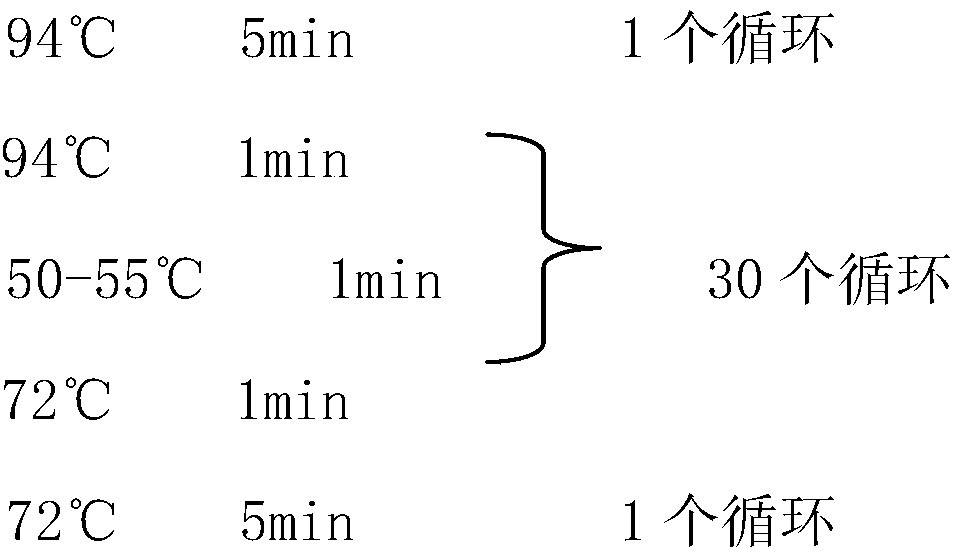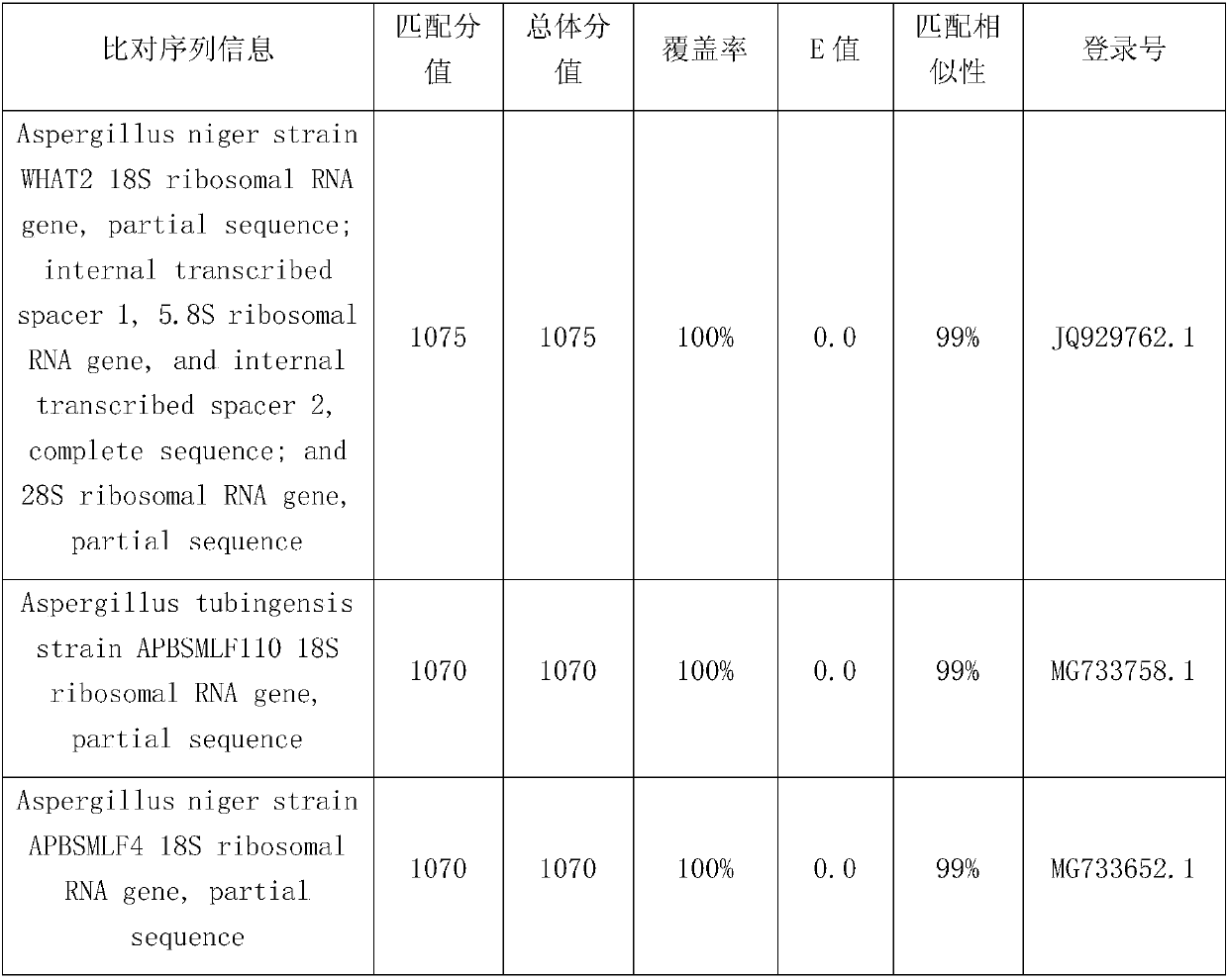Aspergillus niger and application thereof
A technology of Aspergillus niger and seeds, applied in the field of bioengineering
- Summary
- Abstract
- Description
- Claims
- Application Information
AI Technical Summary
Problems solved by technology
Method used
Image
Examples
Embodiment 1
[0022] Embodiment 1: Screening of Aspergillus niger (Aspergillus niger) WH-2
[0023] Collected pastoral soil with rotten fruits and vegetables in Hangzhou City, Zhejiang Province, weighed 1g of soil sample, quickly poured it into a sterile saline triangle bottle equipped with glass beads, mixed well, and then diluted to 10 with a pipette. -2 、10 -3 、10 -4 、10 -5 times. Draw 10 respectively -2 、10 -3 、10 -4 、10 -5 Inject the two-fold dilution into the plate screening medium, evenly spread the culture dish upside down, and cultivate it in a constant temperature incubator at 28°C for 2 to 5 days. Pick a single colony grown on the plate and inoculate it in a 250ml Erlenmeyer flask filled with 50ml of enzyme-producing medium, shake and culture at 28°C and 180rpm for 2 to 3 days, and collect the bacteria and fermentation broth respectively. Add 10 ml of 1M pH8.0 cis-epoxysuccinate sodium to the collected cells and fermentation broth to suspend, shake and react at 30°C for 3...
Embodiment 2
[0025] Embodiment 2: the identification of Aspergillus niger (Aspergillus niger) WH-2
[0026] Step 1: Morphological identification of bacteria
[0027] For the isolated bacterial strains, according to the method of "Handbook of Fungal Identification" (Edited by Wei Jingchao, Shanghai Science and Technology Press, 1979), the structures such as colonies, hyphae, and spores were observed using PDA plates, microscopes, and scanning electron microscopes. The results showed that the strain was cultured on PDA medium at 30°C for 3 days, the colony was round, the surface structure was granular, the spores were black or dark brown, the conidia were spherical, and the hyphae were developed. Referring to the "Handbook of Fungal Identification", the screening strain was initially determined to be Aspergillus niger (Aspergillus niger).
[0028] Step 2: Molecular Biological Identification of Bacteria
[0029] Genomic DNA of Aspergillus niger (Aspergillus niger) WH-2CGMCC No.16799 was ext...
Embodiment 3
[0041] Embodiment 3: Utilize potassium cis-epoxysuccinate and Aspergillus niger (Aspergillus niger) WH-2CGMCCNo.16799 to produce L (+)-tartaric acid
[0042] First cultivate Aspergillus niger (Aspergillus niger) WH-2CGMCCNo.16799 in eggplant bottles with slant medium, cultivate at 28°C for 3 to 5 days until dense spores grow, add 5ml of spore suspension, scrape the spores with an inoculation spatula, and make the spores After being washed well, the mycelium was removed by filtration through sterile three-ply lens tissue. The above-mentioned spore liquid after filtration is counted with a hemocytometer after dilution, according to 3x10 6 mL -1 The spores were inoculated into a 250ml Erlenmeyer flask equipped with 50ml of seed medium, and shaken at 180rpm at 28°C for 24-36h to obtain the seed liquid of the Aspergillus niger strain. Take the above 20ml seed liquid of Aspergillus niger and inoculate it into a 1000ml Erlenmeyer flask equipped with 200ml of enzyme-producing medium...
PUM
 Login to View More
Login to View More Abstract
Description
Claims
Application Information
 Login to View More
Login to View More - R&D
- Intellectual Property
- Life Sciences
- Materials
- Tech Scout
- Unparalleled Data Quality
- Higher Quality Content
- 60% Fewer Hallucinations
Browse by: Latest US Patents, China's latest patents, Technical Efficacy Thesaurus, Application Domain, Technology Topic, Popular Technical Reports.
© 2025 PatSnap. All rights reserved.Legal|Privacy policy|Modern Slavery Act Transparency Statement|Sitemap|About US| Contact US: help@patsnap.com



